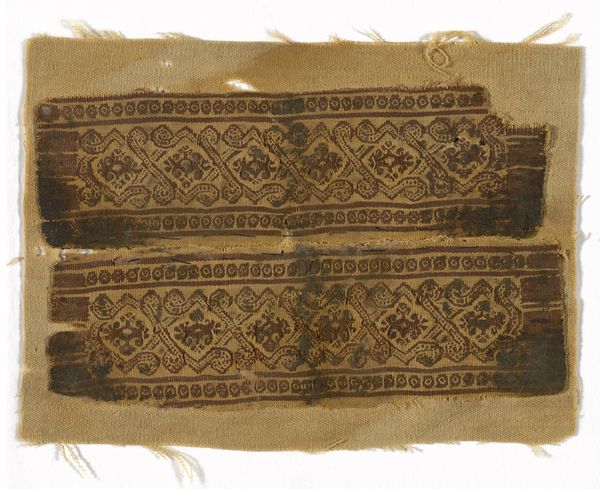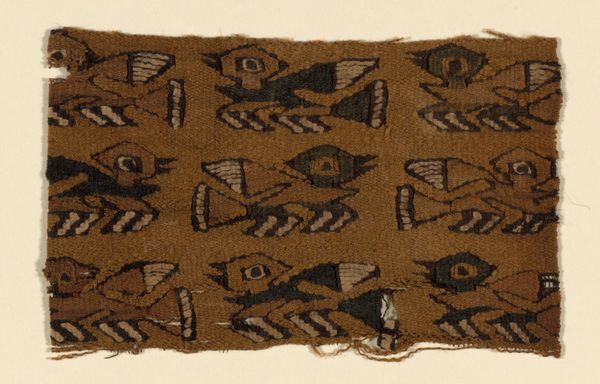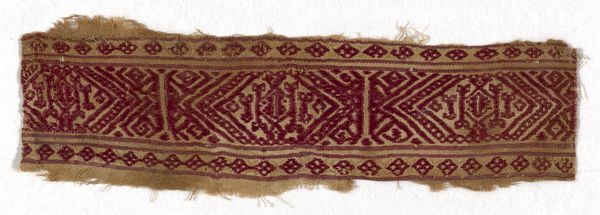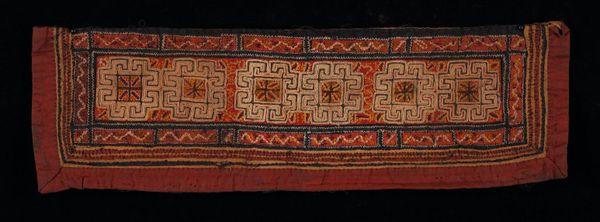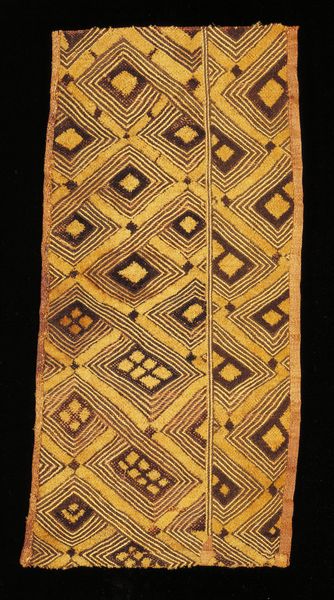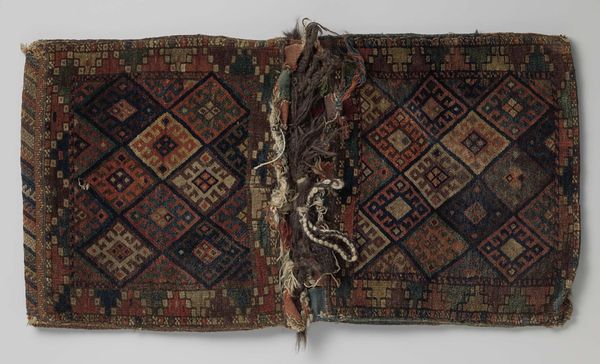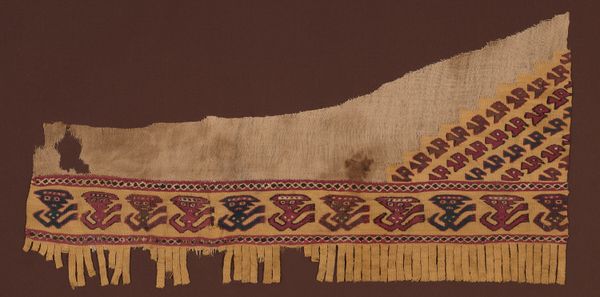
weaving, textile
#
worn
#
textured
#
weaving
#
textile
#
text
#
egypt
#
organic pattern
#
geometric
#
line
#
islamic-art
#
organic texture
Dimensions: 27.9 × 7.6 cm (11 × 3 in.)
Copyright: Public Domain
This is a linen textile border, decorated with a woven geometric pattern by a Coptic artist. We can think of this textile as both a functional object and a symbol of cultural identity in Roman Egypt. The Copts were native Egyptians who converted to Christianity in the early centuries of the Common Era. As Egypt became more integrated into the Roman Empire, Coptic Christians distinguished themselves from both the Roman ruling class and the pagan Egyptian population through their unique artistic and textile traditions. Textiles like this border would have adorned clothing or household items, signalling the wearer’s religious and cultural affiliation. The geometric patterns and color palettes were influenced by both Roman and Egyptian artistic styles. The standardization and preservation of these patterns within the Coptic community helped to maintain a sense of identity, even as the political and religious landscape shifted around them. To understand the significance of this textile, we might consult historical records and archaeological findings to trace the evolution of Coptic identity. By studying such objects, we gain insight into the ways art can be used to negotiate social and political change.
Comments
No comments
Be the first to comment and join the conversation on the ultimate creative platform.
